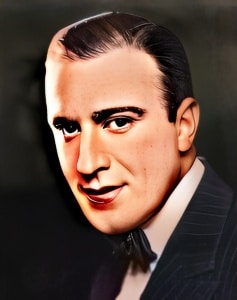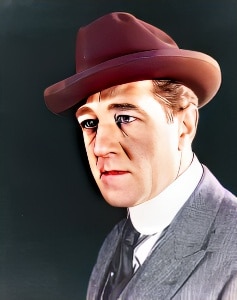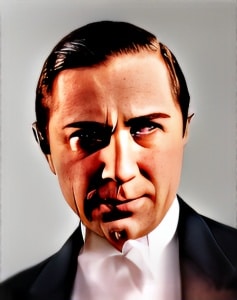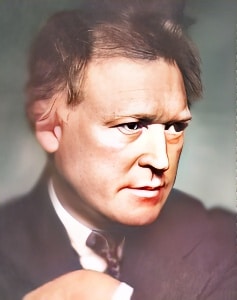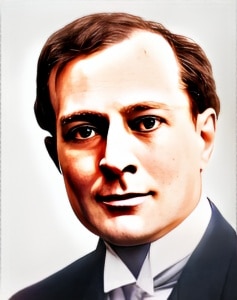 Maurice George Costello (February 22, 1877 – October 29, 1950) was a notable American vaudeville actor of the late 1890s and early 1900s, who seamlessly transitioned into the burgeoning world of early American cinema.
Maurice George Costello (February 22, 1877 – October 29, 1950) was a notable American vaudeville actor of the late 1890s and early 1900s, who seamlessly transitioned into the burgeoning world of early American cinema.
Born in Pittsburgh, Pennsylvania, to Irish immigrants Ellen and Thomas Costello, Maurice’s life was marked by tragedy from an early age when his father died while repairing a blast furnace at Andrew Carnegie’s Union Iron Mill. This loss, however, did not deter Maurice from forging a path in the world of entertainment.
Growing up with a strongly Irish upbringing, Maurice lived with his mother, her Irish brother, and numerous Irish immigrant boarders. His early exposure to this rich cultural environment likely influenced his later career in the performing arts. Maurice Costello made his film debut in 1908, marking the beginning of a prolific career that would see him become one of the world’s first leading men in early American cinema.
Initially believed to have debuted in the 1905 film “Adventures of Sherlock Holmes; or, Held for Ransom,” where he played the lead in what was considered the first serious film featuring the character Sherlock Holmes, recent scholarship has challenged this identification. Holmesian scholar Leslie S. Klinger contested the notion, revealing that Maurice Costello could not have been in that film as he had not yet joined the Vitagraph company at that time.
Costello’s association with Vitagraph marked a significant chapter in his career. He became a member of the first motion picture stock company ever formed, sharing the screen with Florence Turner. Some of his best-known films include “ A Tale of Two Cities,” “The Man Who Couldn’t Beat God,” and “For the Honor of the Family.” Notably, Costello had a reputation for refusing to assist in building sets, insisting that he was “hired as an actor and nothing else.” This, coupled with his role as the creator of the first known school of screen acting, earned him the moniker “the father of screen acting.”
As one of the early leading men in American cinema, Costello played a crucial role in shaping the landscape of silent film. However, like many of his contemporaries, he faced challenges with the advent of “talkies.” The transition proved difficult, leading to a decline in his leading man status. Despite this, Costello continued to appear in movies, often in smaller roles and bit parts, maintaining his presence in the industry until his death in 1950.
One of Costello’s noteworthy roles was his portrayal of Sydney Carton in the 1911 adaptation of Charles Dickens’ timeless classic, “ A Tale of Two Cities.” This performance showcased his versatility and contributed to his lasting legacy in the annals of early cinema.
Beyond his own acting career, Maurice Costello played a significant role in the discovery of Moe Howard, who later became a part of the iconic Three Stooges comedy team. Impressed by Howard’s dedication and work ethic as a teenager running errands at Vitagraph Studios, Costello introduced him to other leading actors of the day. This marked the beginning of Moe Howard’s involvement in the film industry.
Costello’s personal life was not without controversy. He was married to actress Mae Costello (née Altschuk), and on November 23, 1913, he faced legal troubles when he was arrested for beating his wife. Admitting to the assault while intoxicated, Costello eventually received six months of probation for disorderly conduct. The incident shed light on the challenges and complexities within his personal life.
Maurice Costello passed away at the age of 73 in 1950 in Los Angeles, California, due to a heart problem. He was interred at Calvary Cemetery, East Los Angeles, a Catholic cemetery. His legacy lives on through his descendants, including two daughters, actresses Dolores Costello and Helene Costello, a grandson John Drew Barrymore, and a great-granddaughter Drew Barrymore.
In retrospect, Maurice Costello’s career stands as a testament to the formative years of American cinema. From his early days in vaudeville to becoming a pioneering leading man in silent films, Costello’s contributions to the industry, both on and off-screen, have left an indelible mark on the history of entertainment. Despite the challenges he faced with the advent of sound in film, his enduring legacy is evident in the continued impact of his descendants on the world of cinema. Maurice Costello’s life and career are emblematic of an era of transformation and innovation in the art of storytelling through moving pictures.

